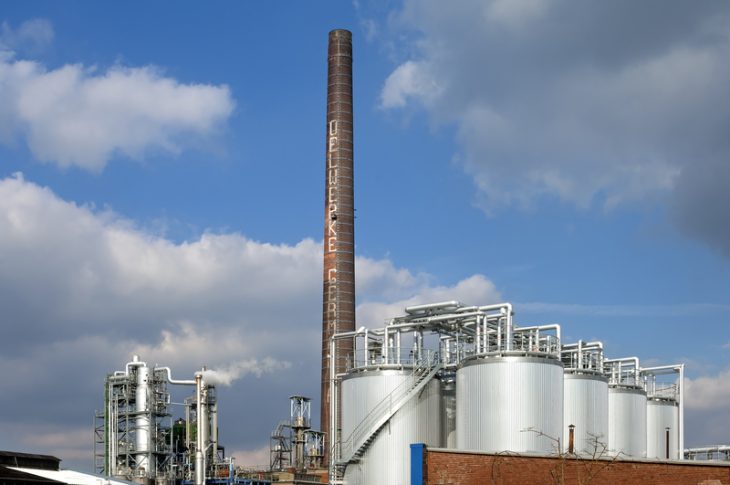For Romania, carbon capture and storage (CCS) technology has come to the fore, considering the ambitious commitments assumed by the EU in the climate field, imposed by the net-zero industry act (NZIA) regulation. According to the provisions of the NZIA starting from 2023, of the 50 million tons of CO2 assumed by the EU per year, to be captured and stored, Romania has the obligation to ensure the storage of approximately 9 Mtpa (million tons per year), it is stated in – a new study carried out by the Oil and Gas Employers’ Federation (FPPG).
Regarding this storage obligation, the cement industry alone needs a storage capacity of about 8 million tons of CO2/year.
According to the answers obtained by Energynomics following the meeting with FPPG members and the Minister of Economy, Ștefan Radu Oprea, Romania will first have to redo, through the institutions involved, the map of storage capacities and bring it up to date, a process estimated to take at least 2 years. Later, the companies will benefit from European funds obtained through the Innovation Fund, the projects being submitted individually by each company involved. Injecting CO2 underground would be advantageous in terms of not being charged with CO2 certificates, which would theoretically cost companies more. However, a preliminary calculation, based on today’s figures, shows that the companies involved would need investments of 4.5 billion euros to store 9MTpA in 15-20 years. At the same time, Minister Ștefan Radu Oprea revealed the extremely tough level of the negotiations with Brussels, despite the presentation of the risk of relocation of some large companies present in Romania, if the CCS costs remain the same as today. “I will always go to the Commission (European Commission – n.r.) to support Romanian companies”, said Ștefan Radu Oprea.
The main conclusions of the FPPG study
“CCS technology has the potential to support the fair transition, generating opportunities and being able to prevent a negative social impact of the transition on the national economy. This can be facilitated by generating new jobs for workers in the oil and natural gas sector, given the similarity of skills and expertise required between this sector and the development, implementation and management of CCUS projects,” FPPG officials say.
According to the Global CCS Institute, carbon capture and storage is beginning to expand, and carbon capture and storage projects have reached unprecedented capacity. As of 31 July 2023, the total CO2 capture capacity of commercial CCS initiatives under development, construction and operation in the public sector is 361 million tonnes per annum (Mtpa), representing a almost 50% increase compared to that reported in the “2022 Global Status of CCS” 21 report. As of July 2023, there are 392 projects under development worldwide, of which 41 are operational. Their total capture capacity amounts to 361 million tons per year.
As international business models for CCS are currently designed, an important milestone was the first cross-border shipment of CO2 by ship from Belgium to Denmark for geological storage in 2023. It is worth noting that most operational CCUS22 projects worldwide are associated with the oil and natural gas industry.
Capture sites and transport networks are being developed to provide services for regional CO2 sources. These sources are usually located less than 1,000 kilometers from the storage source. However, sources may be much more distant where the scale and economics of the project permit, particularly when the main mode of transport is by sea.
EU Net Zero Industry Act Regulation – obligation to ensure injection capacity for oil and natural gas producers
Recently, the EU Council and the European Parliament reached a political agreement on the Net Zero Industry Act. COREPER approved the agreement on February 16, 2024, and the ITRE Commission of the European Parliament approved the agreement on February 22. Substantial market intervention was enacted by introducing injection capacity obligations for oil and gas producers pro-rated based on crude oil and natural gas production volumes from January 1, 2020 to December 31, 2023, entities under a certain production threshold being excluded (to be defined in a separate Delegated Act). The provisions leave room for an unbalanced interpretation of how the quota is allocated to Member States. Thus, the way this quota is designed and applied presents several significant disadvantages for the new Member States, which are large gas producers. Based on the European Commission’s provisional estimates, this will translate to around 9 Mtpa for Romania, the second highest share in the EU after the Netherlands.
According to the document, Member States are responsible for identifying and transmitting to the European Commission the relevant entities, as well as their crude oil and natural gas production volumes from January 1, 2020 to December 31, 2023. After receiving these reports, the Commission will consult Member States and relevant parties and allocate quotas.
Also, in accordance with the provisions, within one year of the entry into force of the Regulation, the aforementioned entities must submit to the Commission a plan showing how they intend to meet their contribution requirement. These plans are expected to: (1) confirm the entity’s contribution, expressed in terms of the targeted volume of new CO2 storage and injection capacities commissioned by 2030; (2) detail the means and steps for achieving the targeted volume.
To meet the expected volumes of available injection capacity, the relevant entities should: develop or invest in CCS storage initiatives; enter into agreements with other entities; enter into agreements with storage project developers or third-party investors to ensure that they fulfill their contribution.
Two years after the entry into force of the Regulation, the said entities should report to the Commission on the progress made.
The proposal states that a value chain approach should be encouraged through both EU and national measures. The text also emphasizes that investments should be made, while paying attention to the development of “viable business models for the entire carbon dioxide value chain.”

